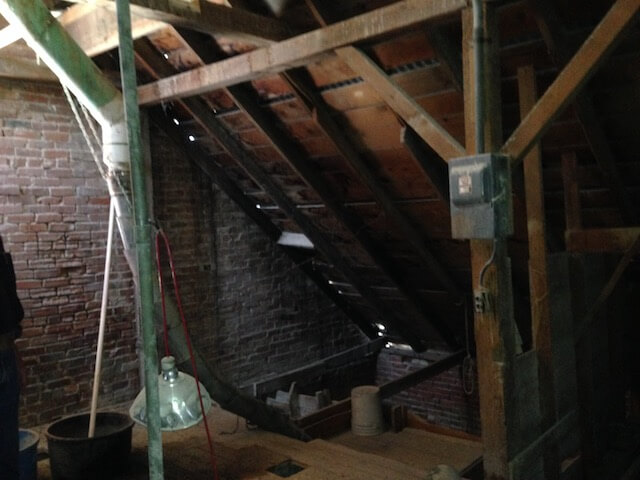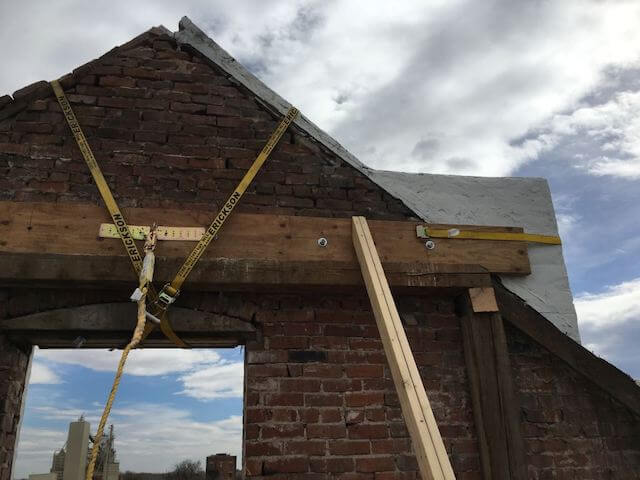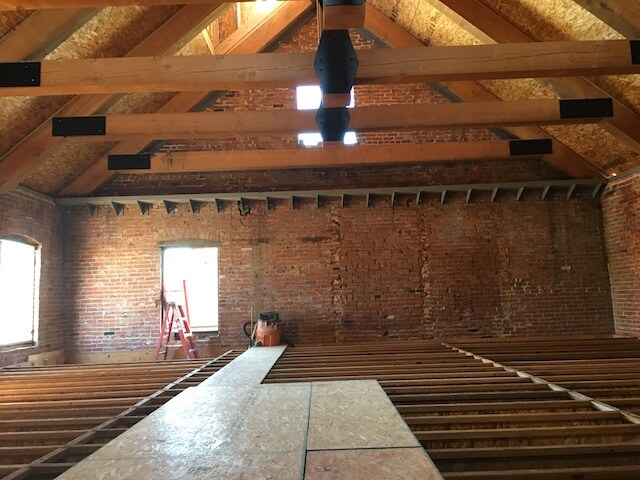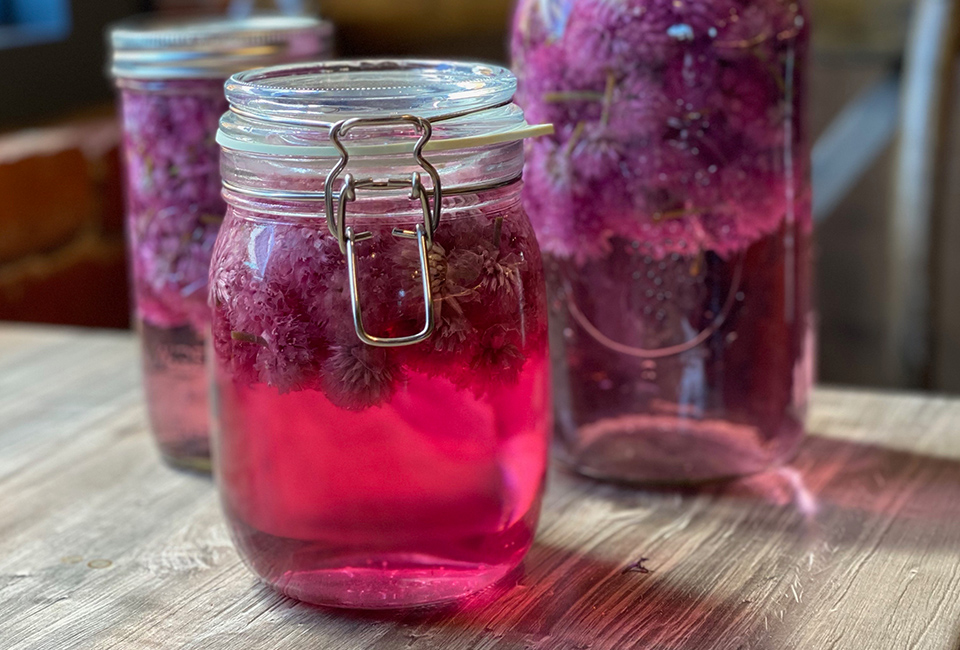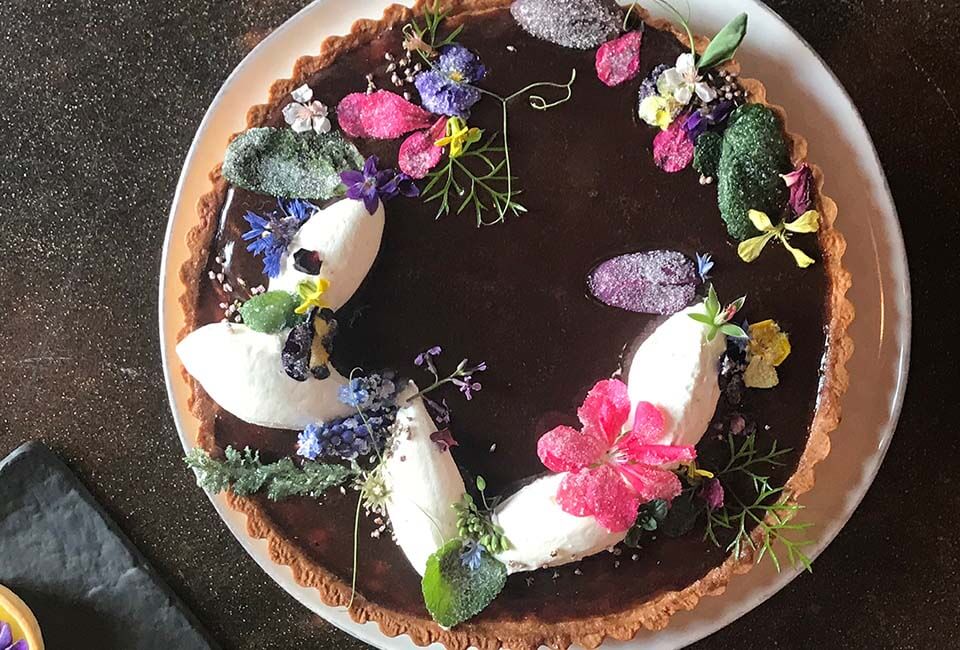Join Ginger Graham in the Mill Top as she shares some of the history and renovation details on this wonderful, historic event space that’s now a perfect spot for celebrations of all kinds!
This old building was built for a single purpose: to store and move grain. The entire top half of the building held large, wooden grain bins only accessible by climbing all the way to the top and walking a catwalk just inside the peak of the tin roof. You had to have a little courage to do it!
The stairs were clearly made for necessity and the ceilings couldn’t even accommodate my height without ducking at various turns and twists as I navigated the central stairs to the small landing on the 2nd floor, then climbing another set of wooden steps (and they didn’t seem to think there was a need for handrails anywhere!) up to the landing at the peak.
The old tin roof had been leaking for years and had to be removed. Then, we removed all the interior wooden structures, leaving only the brick walls. It was easy to see how the building was held together: steel rods were crossed north/south and east/west, piercing the building walls and fastened through wood on the outside the building. That’s how a tall brick structure stayed square.
With all the interior and cross structures removed, we were tasked with holding the building upright while experts in historic brick repair could fill holes, replace eroded grout and stabilize the brick walls.
The support systems included wood and metal bracing from street level all the way to the top peaks, and were attached to large straps circled around the stepped parapets (the iconic architectural points on the roof line). We were so glad that the winds did not blow with any force during this time!
With the roof and the interior supports all removed, we discovered the building needed more support than originally planned. The project had to be stopped for several weeks while a new system was designed to help hold the building square and support the weight of the new roof. Those old brick walls were not able to do that on their own.
A large steel “girdle” was fashioned and now sets on top of the entire buildings’ four walls – permanently supporting the square shape and creating a stable bed for the large insulated roof, wooden trusses and tongue and groove ceiling.
Even with all the work to create the Mill Top, we still had the challenge to make it accessible from the new building, which houses the new (safe and pleasant) stairway and the elevator. The only access point available to us was the southwest corner on all three floors. Due to its designation as a building on the National Register of Historic Places, we had to gain permission to alter the exterior by creating an opening on all 3 floors in that one corner. During construction, a hole was punched in the area that would become the door to the Mill Top, so we could see how the two buildings would join.
I think it was an architectural and structural miracle that the building survived all the renovation. We had a lot of smart people supporting the project and I think the Mill knew it had another hundred years of community gatherings to host!
